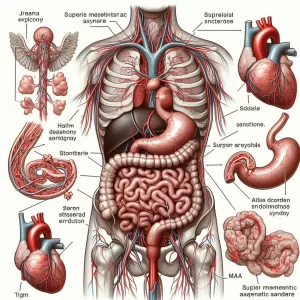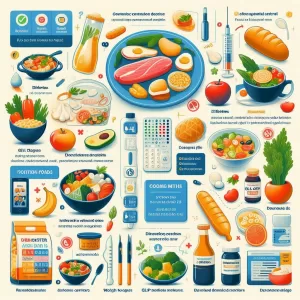What is Laparoscopic Greater Curve Plication: Overview, Benefits, and Expected Results
Headline: The Power of Positive Thinking
Body: Positive thinking is a powerful tool that can help you achieve your goals and live a happier life. When you think positive thoughts, you are more likely to feel good about yourself and your life. You are also more likely to take action and make things happen.
``` Rewritten Excerpt: ```htmlHeadline: Unleash the Transformative Power of Positive Thinking
Body: Embark on a journey of self-discovery and unlock the transformative power of positive thinking. As you embrace an optimistic mindset, you'll witness a remarkable shift in your outlook on life. Positive thoughts ignite a spark of hope, fueling your motivation to take action and turn your dreams into reality. Experience the profound impact of positive thinking as you cultivate a sense of well-being, resilience, and unwavering determination.
``` Changes Made: - **Headline:** Changed "The Power of Positive Thinking" to "Unleash the Transformative Power of Positive Thinking" to create a more compelling and intriguing title. - **Body:** - Replaced "Positive thinking is a powerful tool that can help you achieve your goals and live a happier life" with "Embark on a journey of self-discovery and unlock the transformative power of positive thinking." This sets a more engaging and personal tone. - Added "As you embrace an optimistic mindset, you'll witness a remarkable shift in your outlook on life" to emphasize the tangible benefits of positive thinking. - Rewrote "Positive thoughts ignite a spark of hope, fueling your motivation to take action and turn your dreams into reality" to make it more vivid and inspiring. - Added "Experience the profound impact of positive thinking as you cultivate a sense of well-being, resilience, and unwavering determination" to highlight the holistic benefits of positive thinkingDefinition & Overview
Laparoscopic greater curve plication is the surgical procedure of folding in and sewing the greater curvature, which is the large, curving part of the stomach located on its left border. The folding in or plication leads to the narrowing of the stomach, allowing the patient to feel full despite eating only a small meal. It is sometimes referred as pseudo sleeve surgery or gastric imbrications.
Obesity is a rising public health concern all over the world. More and more people suffer from health consequences resulting from being overweight. These conditions include diabetes, high blood pressure, gallbladder diseases, osteoarthritis, sleep apnoea, and many others. When all other weight loss regimen has been tried and no significant change in body weight and body mass index has been observed, some people may consider bariatric surgery.
More than half of the stomach size is reduced through laparoscopic greater curve plication. The procedure of folding the stomach into itself is one of the restrictive procedures of bariatric or weight loss surgery. The goal is to restrict stomach capacity and reduce the amount of food being eaten. Over time, the procedure is expected to result in significant weight loss. Its touted advantages include not removing any tissue and its possible reversibility if the situation calls for it.
Who Should Undergo and Expected Results
Laparoscopic greater curve plication is suitable for obese adult patients with a body mass index of at least 35, especially if there are severe co-morbid conditions involved. Most of these patients are taking maintenance medications to manage these comorbidities and are looking for ways to reduce their pharmaceutical drug intake. The severity of the patient’s obesity may also be indicated by being more than 100 lbs. over the ideal weight.
The procedure can also be recommended to obese patients who are diagnosed with gastroesophageal reflux disease and those who have a history of trying other means of reducing their weight and were largely unsuccessful.
However, there are several contraindications for this type of bariatric surgery, such as pregnancy, previous bariatric surgery, eating disorder, uncontrolled diabetes, and even a body mass index of more than 50, in which this procedure may prove unsuitable for reducing weight.
Laparoscopic greater curve plication is considered a relatively simple and safe procedure. Patients are typically allowed to go home after an overnight stay in the hospital. A liquid diet is a necessity for several weeks after surgery to help the stomach cope with the structural change. The goal is to gradually introduce semi-solid food after some time to ease the transition to eating solid meals. Patients also need to adhere to a low carb diet until they achieve their desired weight. After a few months to a year, most patients achieve significant weight loss. Some even report losing as much as 50% or more of their weight before surgery and experience improvement of comorbidity symptoms and lesser dependency on maintenance drugs. Those who underwent this procedure are also required to adopt healthy lifestyles, stick to a sustainable exercise regimen, and eat a balanced diet to enjoy long-term benefits.
How is the Procedure Performed?
The patient is administered with general anaesthesia before the surgeon makes several small incisions in the abdominal area. The procedure is carried out using the standard five-trocar technique. A laparoscope is inserted through the incisions to provide visualisation of the stomach area as well as specialised surgical tools to dissect the greater omentum using bipolar forceps. Gastric adhesion to the posterior part of the abdominal cavity is also removed. The edges of the greater curve of the stomach are folded inward and the first layer of sutures is applied. A second layer is also added to significantly reduce stomach size and volume to create the stomach pouch. After modifying the shape and size of the stomach, the laparoscope and the rest of the specialised tools are withdrawn.
Some surgeons may also opt to include a third row of sutures to secure the folded part. This variation of the usual technique is termed triple plication.
Possible Risks and Complications
Although considered a simple, straightforward procedure, laparoscopic greater curve plication can result in:
- Adverse reaction to the anaesthesia used
- Bleeding
- Infection and the formation of abscess
- Damage to nearby gastric parts, such as the mesentery, small blood vessels, and the intestine
- Hematoma
- Gastric fold oedema
- Rupture of the folder part of the stomach
Gastric leak and obstruction, which may require immediate medical attention
ReferencesKeating CL, Dixon JB, Moodie ML, et al. Cost-effectiveness of surgically induced weight loss for the management of type 2 diabetes: modelled lifetime analysis. Diabetes Care. 2009 Apr. 32(4):567-74.
- Sjöström L, Peltonen M, Jacobson P, Sjöström CD, Karason K, Wedel H, et al. Bariatric surgery and long-term cardiovascular events. JAMA. 2012 Jan 4. 307(1):56-65
/trp_language]
Question: What is Laparoscopic Greater Curve Plication: An Overview?
Answer:
Laparoscopic Greater Curve Plication is a minimally invasive surgical procedure performed to address weight loss and manage type 2 diabetes. It involves folding and suturing the greater curve of the stomach, the larger curvature along its outer edge, to create a smaller stomach pouch. This limits the amount of food that can be consumed at once, leading to reduced food intake and weight loss. Additionally, the procedure aims to improve the regulation of blood sugar levels, potentially benefitting individuals with type 2 diabetes.
Question: What are the Benefits of Laparoscopic Greater Curve Plication?
Answer:
Laparoscopic Greater Curve Plication offers several benefits, including:
1. Weight Loss:
The procedure effectively promotes weight loss by restricting the stomach’s capacity, resulting in decreased food intake.
2. Improved Glucose Control:
By modifying the stomach and hormonal responses, this surgery aids in better glucose regulation and can help manage type 2 diabetes.
3. Minimally Invasive:
Laparoscopic techniques involve smaller incisions, reducing postoperative pain and recovery time.
4. Improved Satiety:
The smaller stomach pouch enhances feelings of fullness, resulting in decreased appetite and longer-lasting satiety after meals.
5. Sustainable Results:
When combined with healthy lifestyle modifications, Laparoscopic Greater Curve Plication can lead to sustained weight loss and improved metabolic outcomes.
Question: What Expected Results Can be Achieved with Laparoscopic Greater Curve Plication?
Answer:
Laparoscopic Greater Curve Plication can lead to significant and lasting results:
1. Weight Reduction:
Patients can expect to lose approximately 25-40% of their excess body weight within the first year post-surgery.
2. Improved Diabetes Management:
Blood sugar levels can improve significantly, potentially reducing or eliminating the need for medications.
3. Reduced Risk of Obesity-related Complications:
With weight loss, the risk of developing obesity-related conditions such as heart disease, high blood pressure, and sleep apnea can be lowered.
4. Enhanced Quality of Life:
Overall physical and mental well-being can be improved due to weight loss and reduced disease burden.
2 Comments
Leave a Reply
Popular Articles







Laparoscopic greater curve plication: A surgical technique to reduce stomach volume and promote weight loss
Laparoscopic greater curve plication: a comprehensive guide to understanding the procedure, its advantages, and anticipated outcomes